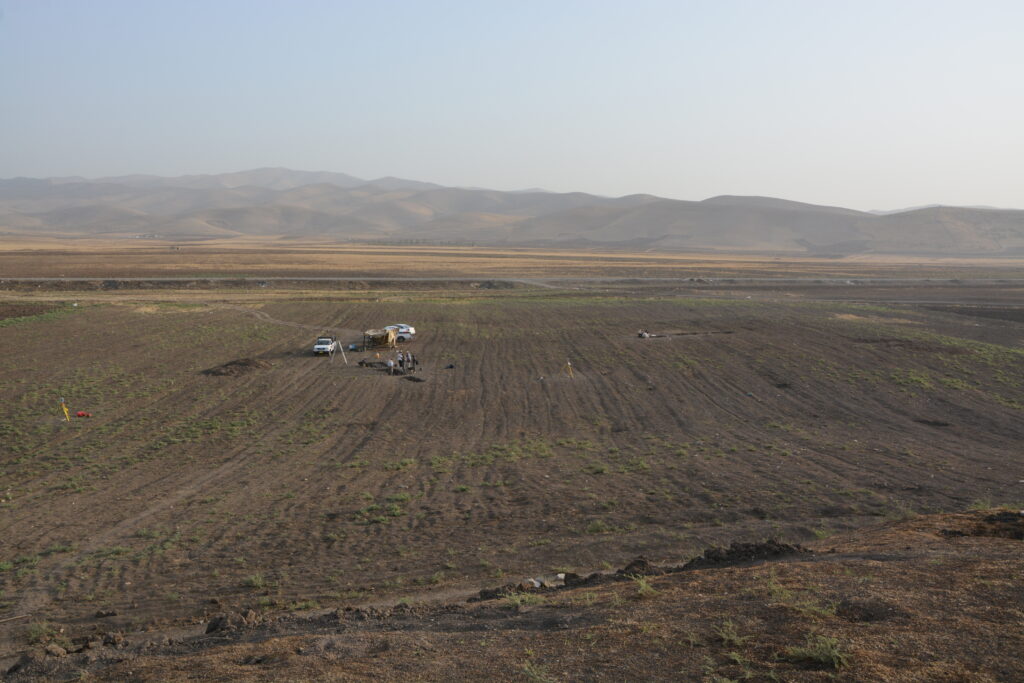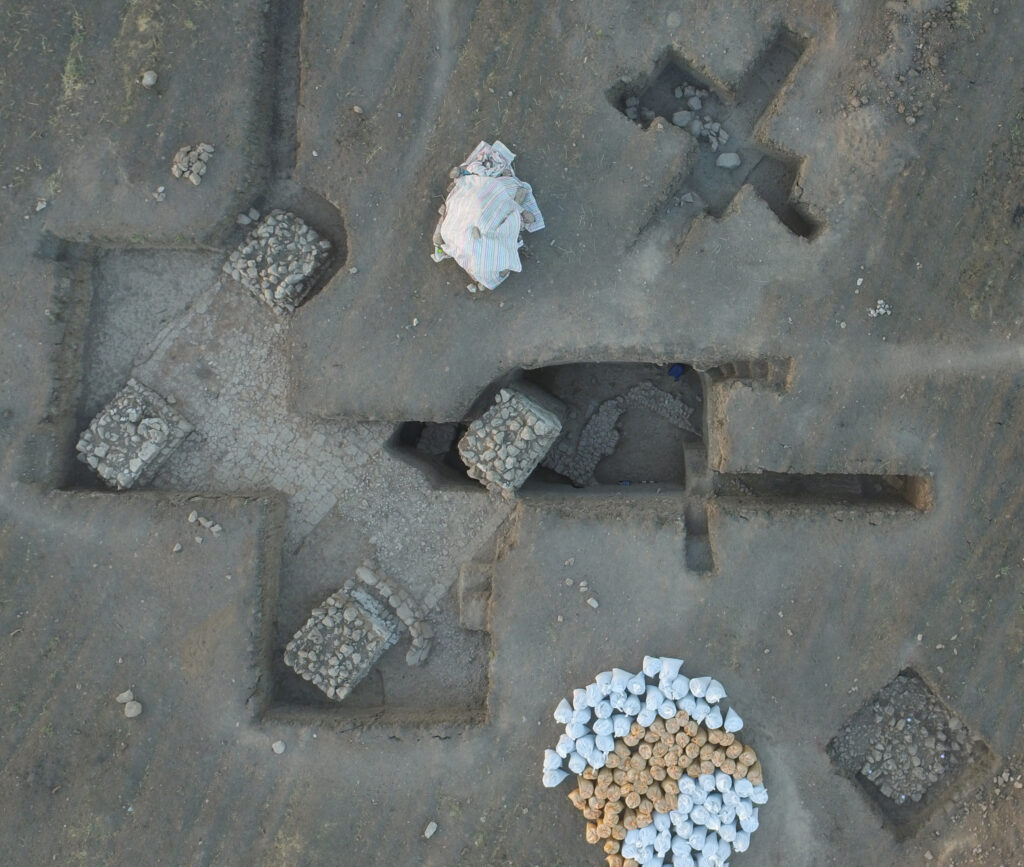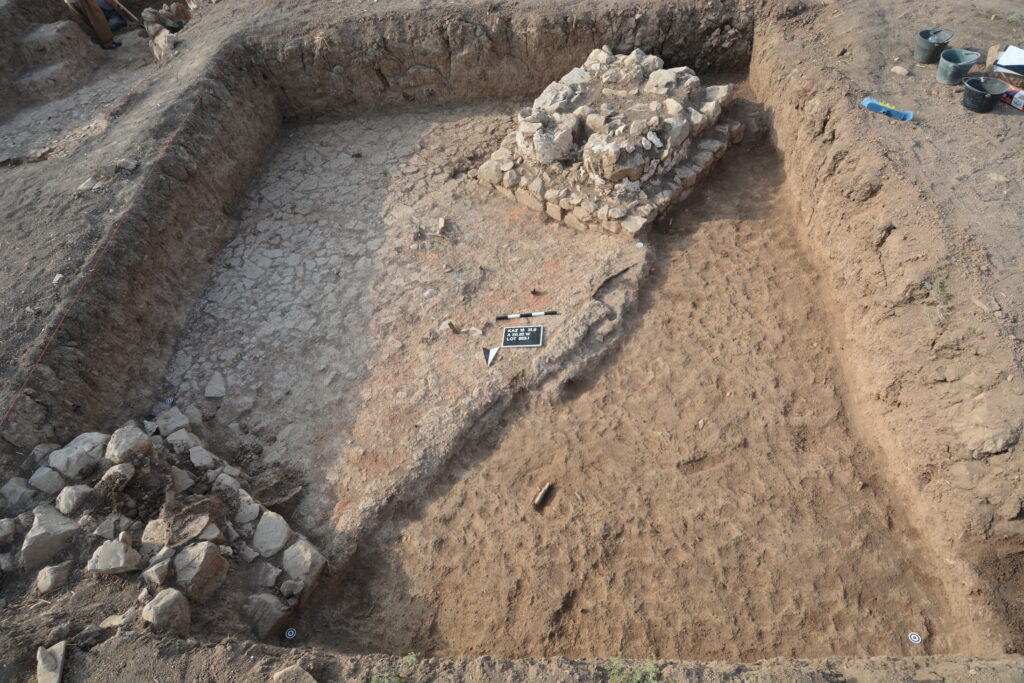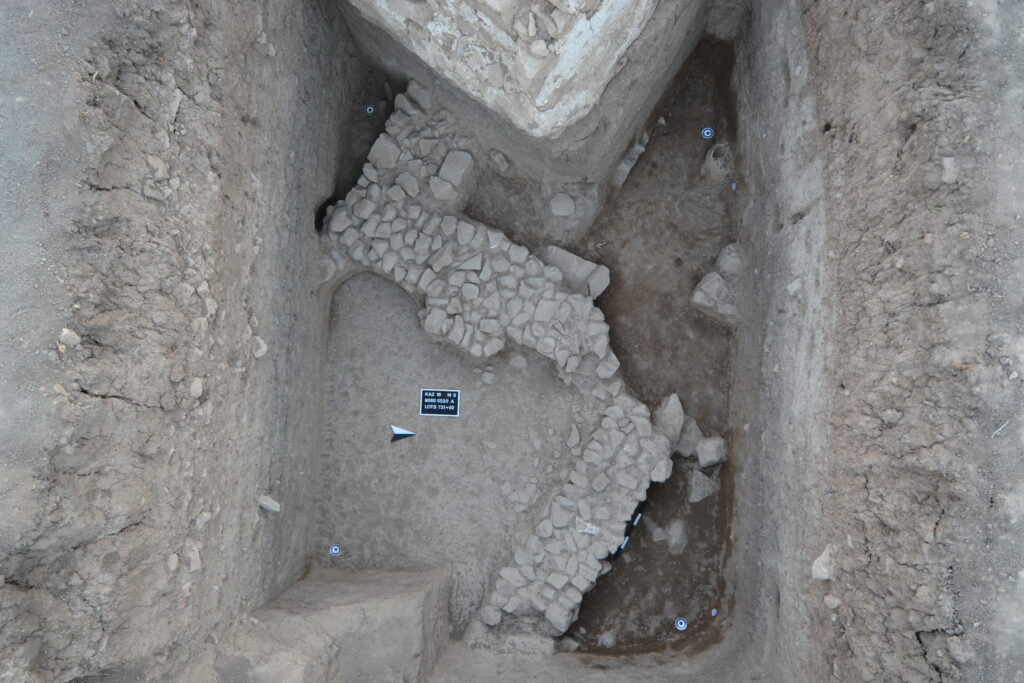Area A
Kazhaw, Area A
Area A is located in the centre of Mound A. Several trenches with a total area of 100 square meters were excavated here in 2015 and 2016, the main purpose of which was to clarify some anomalies already visible on the magnetics. These indicated the presence of a larger building whose date and function were unknown.

The late Sasanian pillar-buidling
Features from the late-Sasanian period were uncovered just below the recent surface. This is a larger structure whose characteristic feature is several pillars built of quarry stones in the centre of the building. Based on the magnetics, it can be assumed that the uncovered area is only a small part of a much larger complex, which was probably largely made of mud bricks.

The pillars – a total of five were uncovered – were built of rubble stones and plastered with white mortar, which, however, left some of the stones visible. According to current knowledge, all the pillars have a foundation made of quarrystones and a 10–20 cm high plinth. Above the plinth, however, the design is different. The two western pillars are somewhat smaller than those further to the east. However, these two pillars have two half-columns set in front of them, while the eastern pillars are left rectangular.

The floor in the building was divided into several zones, which are visually separated from each other by their architectural design. To the west of the uncovered section of the building – west of the pillars – there was originally a slightly raised floor made of stamped earth. But this had largely been washed out due to its proximity to the surface; only a few stones at a higher level and a mudbrick step still indicated this at the time of uncovering.
In the western area between the pillars, the walking surface is covered with poorly fired mudbricks. While there are still mostly complete bricks in the eastern area, in the western area mainly broken bricks were used. This is followed to the east by a stamped earth floor. In certain areas small stones are laid out, which in turn are divided by a single row of mudbricks.
Further test trenches were excavated in the north to record any outer walls of the building. The remains of stone foundations or plinths were only recorded at certain points. However, it should be noted that there was an increased amount of past mudbrick rubble here, so it can be assumed that walls that once existed were probably completely washed out at the time of excavation.
All in all, this must have been a larger building complex that probably occupied a large part of Mound A in the Sasanian period. Comparisons of the buildings show similarities to churches and monasteries, but also to palaces of the Sasanian period. The monastery of Bazyan to the northwest of the Shahrizor plain is certainly the best comparison, so that a similar function can also be assumed for the pillar building in Kazhaw.
The 2nd millennium BCE
The area around the eastern pillar was also excavated below the Sasanian features in order to record the stratigraphy of Mound A. In addition to layers of little significance with mixed finds and no structures, features from the early 2nd millennium BCE were recorded around 1.5 m below the Sasanian floors.

The remains of several quarrystone walls were uncovered. These were probably the plinth zones, which were intended to prevent the walls from being damaged by moisture rising from the ground. The rising masonry probably consisted of mudbricks, but these were no longer preserved at the time of the excavation. The remains of a tannur indicate that these were probably domestic contexts. A walking surface was not recorded.
The finds also included an increased number of sherds of so-called Shamlu ware. Perhaps this is an indication that the settlement on Mound A is to be interpreted in a different cultural context than the contemporaneous settlement on Mound B. It seems at least possible that the settlement on Mound B already existed for some time before immigrants settled on Mound A as well. Apparently, however, the latter settlement only lasted for a short time and was abandoned after one or two generations.

